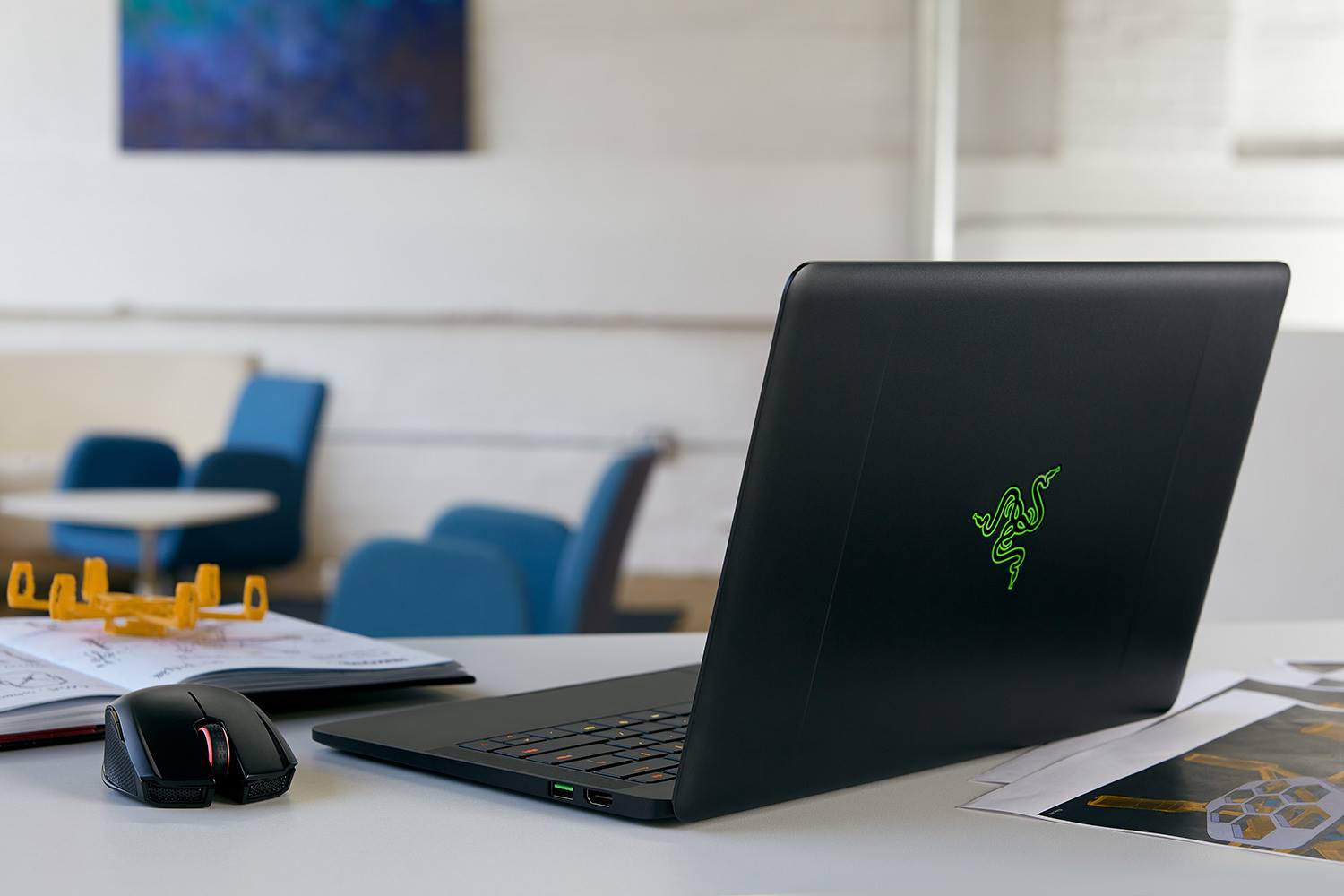Linux Mint Cinnamon is one of the perfect and best-fitted user-friendly Ubuntu-based Linux distro available out there. This Linux distro is suitable for those who come from Windows OS. The main motto of Linux Mint is “From freedom came elegance” which provides a stable, powerful, easy to use, and completely out of the box experience. An entirely open source driver and user-space daemon that allows you to manage your Razer peripherals on GNU/Linux. I got a Razer Blade Stealth! In this video I attempt to run Ubuntu Mate 15.10 live USB on it. It boots mostly pain-free, but the touchpad does not work and t. This page aims to document the problems and solutions that occur when running the latest Ubuntu on a Razer Blade. Due to the young age of this laptop this page is a work in progress, so feel free to contribute. Please note that this page is not for the Pro or the Stealth.
Translation(s): none
Models covered
Razer Blade Stealth (Early 2017)
DebianOn is an effort to document how to install, configure and use Debian on some specific hardware. Therefore potential buyers would know if that hardware is supported and owners would know how get the best out of that hardware. The purpose is not to duplicate the Debian Official Documentation, but to document how to install Debian on some specific hardware. If you need help to get Debian running on your hardware, please have a look at our user support channels where you may find specific channels (mailing list, IRC channel) dedicated to certain types of hardware. |
Core Components | |
Boot Standard Kernel: | |
LAN network card: | |
Detect hard drives: | |
Extra Features | |
CPU Frequency Scaling | [?] |
Hibernation | [?] |
Sleep / Suspend | {?} |
Xorg | |
- OpenGL | |
- Resize-and-Rotate(randr) | |
Switch to External Screen | |
Mouse | |
- Built-in (Touchpad) | |
- Built-in (Touchscreen) | |
Wireless/Wifi | |
Keyboard's Hotkeys | |

Legend :
= OK ; Unsupported(No Driver) ; = Error (Couldn't get it working); [?] Unknown, Not Test ; [-] Not-applicable
= Configuration Required; = Only works with a non-free driver and or firmware
This laptop comes with EFI Secure Boot enabled. It can easily be disabled in the BIOS (F1 at boot) by switching to the legacy BIOS mode. However, this will prevent Windows from booting, if you want to do a dual boot install. Windows and Debian both boot with secure boot disabled.
Display
Works, no problem.
Audio
Works, no problem.
Keyboard
Has an issue with the ?CapsLock key causing a crash in the graphics driver. To workaround create /etc/X11/xorg.conf.d/20-razer-kbd.conf with the following:
Section '?InputClass'
- Identifier 'Disable built-in keyboard'
?MatchIsKeyboard 'on' ?MatchProduct 'AT Raw Set 2 keyboard' Option 'Ignore' 'true'
?EndSection
This will disable the keyboard driver causing the crash. There is a Razer specific keyboard driver available from: https://openrazer.github.io/ that does not crash.
Mouse
The Trackpad works, and supports multiple finger scrolling similar to the trackpad on Macbooks.
Power Management
Sleep and resume works, add kernel parameter: GRUB_CMDLINE_LINUX_DEFAULT='button.lid_init_state=open' to /etc/default/grub Suspend to ram works with 'echo mem > /sys/power/state'
Add this keyboard fix to /etc/pm/sleep.d/20_razer_kbd

#!/bin/sh case $1 in
- suspend|suspend_hybrid|hibernate) # everything is fine ;; resume|thaw) xinput set-prop 'AT Raw Set 2 keyboard' 'Device Enabled' 0
- ;;
esac
This will disable the builtin AT Keyboard driver that causes the laptop to crash.
WiFi
Works, requires non-free firmware (Atheros QCA6174)
lspci
lsusb
lsusb -v | grep -E '<(Bus|iProduct|bDeviceClass|bDeviceProtocol)' 2>/dev/null
Attachments
Some configuration files and sample outputs.
Useful Links
Credits
CategoryLaptopComputer
Earlier this year Razer co-founder and CEO Min-Liang Tan announced that Razer is planning better laptop support on Linux. He noted that more customers are requesting Linux support and they formed a goal of figuring out how to make 'the best notebook in the world that supports Linux.' Razer doesn't have any Linux laptop announcement to make yet, but for seeing the current state of affairs, they sent over the Razer Stealth laptop so we could put it through our Linux testing paces at Phoronix. Here is a look at the Razer Stealth ultrabook on Linux as well as a variety of interesting performance metrics, including some power metrics compared to Windows.
Since the announcement earlier this year, I have been in contact about their Linux interest and intentions. They continue to evaluate options for improving Linux support on their Razer laptops and are aware of the current shortcomings as well when trying to use (and configure) Razer gaming mice/keyboards/peripherals under Linux. It's too early to tell how things will play out, but I am very optimistic about Razer's possibilities for advancing their Linux support across their product lines. It could make for an interesting 2018 if Razer decides to go ahead with better Linux support and finally having a go-to Linux laptop from a major vendor besides the Dell XPS from the Sputnik project or the rebranded/smaller-volume vendors like System76, ZaReason, and Purism.
The first Linux laptop I decided to look at today is the Razer Blade Stealth, given its focus on low-power/long battery life and what could be a good MacBook Air equivalent for Linux users. The Stealth laptop I received for testing is equipped with an Intel Core i5 7500U (Kabylake) processor with HD Graphics 620, 16GB of RAM, 256GB Samsung SSD, and 2560x1440 display.
I haven't been able to find the exact configuration of this laptop from the major Internet retailers available. But for $1399, the Razer Blade Stealth is available with a Core i7 Kabylake CPU, 13.3-inch display, 256GB SSD, and a 3200x1800 display. There's also a similar Stealth model with 4K touchscreen display for $1559. Unfortunately, at least in the US, the Dell XPS 13 Developer Edition with Linux is no longer available from Dell.com for a price comparison on that side. From System76 they do offer a Galago Pro 7500U + 16GB RAM + 250GB NVMe + 1 year warranty model for about $1394 USD. Granted, System76 isn't yet on to designing their own complete laptops yet. From Purism, their Librem 13 with 16GB RAM, 250GB SSD, and an older Skylake Core i5 CPU would cost $1856 USD.
Razer Blade Stealth 13 Linux
The Razer Stealth 13.3-inch laptop weighs just 2.93 lbs (1.32 kg) and at with their QHD+ display under Windows at least advertises a nine hour battery life while it can be extended to 15 hours with the Razer Power Bank.
Linux On Razer Blade
This Razer Stealth laptop simply features a USB-C / Thunderbolt power also used for charging, two USB 3.0 ports, an audio jack, and an HDMI 2.0 port. There isn't any card reader slots, etc.
Arch Linux On Razer Blade
I have been testing out the Razer Blade Stealth for about the past two weeks and overall am happy with it as a lightweight laptop that aside from a few issues was working out fine under Linux on popular distributions.

